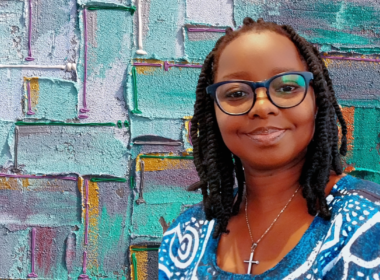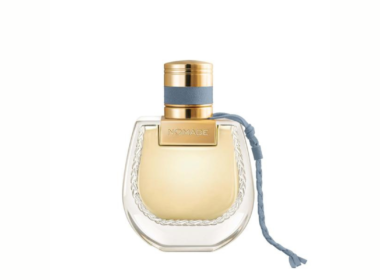In this exclusive interview, we embark on a fascinating voyage into the delicate yet profound art of ceramics with Idris Olabode (Clay of Lagos), an artist whose hands mould more than just clay—they shape narratives, dreams, and a unique philosophy of life. In this conversation, Idris Olabode shares insights into his unconventional path in pottery, the spiritual dimensions of his craft, and the transformative power that emerges from embracing failure.
FAB: What really drew you to this art form, and how did your journey start as a pottery or ceramic artist?
Idris Olabode: My venture into pottery unfolded unexpectedly, tracing its roots back to my secondary school days as a science student. I found myself entangled with technical drawing, a prerequisite for pursuing art, a subject I initially had no intention of exploring. Yet fate had its way, steering me towards an unexpected journey into the realms of creativity. The seed of creativity was sown early in my life. Even during primary school, I would immerse myself in composing stories and reimagining narratives, such as crafting my version of the tale of Ralia the Sugar Girl. These early expressions of creativity paved the way for a deep-seated passion that I carried with me.
My artistic journey led me to Yaba College of Technology, where I immersed myself in the vibrant atmosphere of an art school. As fate would have it, I found myself in the role of a class representative, earning favour from the lecturers who predominantly specialised in painting. This unexpected turn became a catalyst for my deepening affection for painting, a passion I had harboured for a long time. In the halls of the college, my lecturers became not just mentors but role models. Their guidance extended beyond the classroom, with personal attention and hands-on lessons in mixing various shades of color. It was within the confines of their studios that I found myself working side by side with these passionate individuals who shared my love for painting. My initial desire to become a painter materialised, fueled by the mentorship and camaraderie of those who had a genuine passion for the craft. This chapter of my journey was a testament to the power of connection and the influence of those who inspire us along the way.
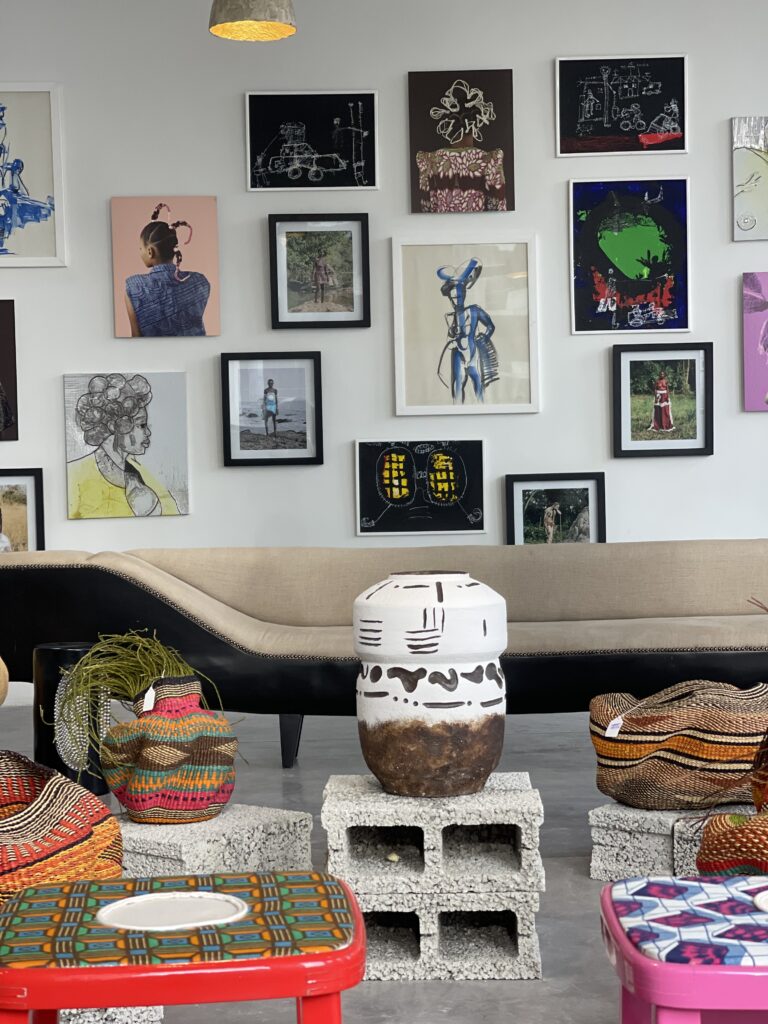
My academic journey took an unexpected turn during my final year when I encountered a setback with a carryover in sculpture, particularly involving clay. While I had a genuine interest in art, my focus on clay-related works was not as attentive as it should have been, leading to an additional year in school. This extra year came with its challenges, particularly the financial burden of paying fees for just one course. Faced with the prospect of explaining my situation to family and feeling the weight of potential disappointment, I chose a different path. Rather than seeking assistance, I took charge of my destiny.
Navigating towards the ceramics studio, I recognised an opportunity to turn my passion for clay into a means of overcoming my academic hurdle. Pottery, being a discipline often perceived as messy and overlooked by many newcomers, became my gateway to financial independence. Observing that most freshmen shied away from the hands-on, clay-centric aspect of art, I identified with their reluctance. Drawing from my own experience, I seized the chance to assist them with their assignments and provide clay for their projects. In doing so, I not only helped my fellow students but also generated income to cover my overdue school fees. This resourcefulness earned me the moniker “Clay” on campus, a symbol of resilience and self-reliance born out of challenging circumstances.
Amidst the clay, a deeper sense of purpose began to reveal itself, reshaping my perception of what had initially seemed like a failure. Although I diligently pursued an investigation into the discrepancy in my marking, even involving the dean and school director, the outcome remained unchanged. Accepting this as my destiny, I decided to let it be, trusting that time would eventually unveil the reasons behind my perceived failure. Just two weeks later, a serendipitous encounter altered the course of my artistic journey. Professor Michael Olugbile, a pioneer of ceramic studies and an esteemed figure in the field, visited from the United States. Having ventured into ceramics since 1977, he enlightened me on the broader spectrum of pottery, introducing the scientific nuances that extended beyond what I had experienced at Yaba College of Technology. The revelation fascinated me. Embracing this newfound understanding, I shifted my focus from traditional pottery to ceramics, delving into the intricate world of clay chemistry and its scientific dimensions. This decision, while opening doors to a more expansive realm, came at the cost of distancing myself from my roots in painting. The shift unsettled some of my painting lecturers and friends, leading to strained relationships. Yet, in my pursuit of knowledge and growth, I forged a path aligned with my evolving artistic journey.
Entering the realm of the art world, paintings dominate the visual landscape before sculptures and ceramics come into focus. Many of my contemporaries chose the path of painting, and as a result, our conversations dwindled. Opting for ceramics as my dedicated craft meant embracing solitude for the most part. The intricate process of ceramics demands undivided attention and time, unlike the swift transitions of painting. The immersive nature of working with clay captivated me, often leaving me unaware of the passing hours. Ceramics, unlike painting, entail a messy affair that requires a thorough cleanup. It’s not a quick switch from art to socialising; it demands a deliberate process. The busyness of ceramics consumed my days, and hanging out with friends became a luxury. My commitment to this craft led to a reclusive routine, yet it was in this solitude that I found a profound connection with the art form.
My transformative journey into ceramics took an unexpected turn when I encountered Professor Michael Olugbile. His teachings and guidance propelled me into a world where clay wasn’t just a medium but a scientific exploration. We exchanged contacts, and his continued support from afar included sending textbooks on clay chemistry, empowering me to create my own clay. The fusion of training, passion, and philosophy immersed me further into ceramics, leaving little room for anything else. To navigate my newfound path, I even fabricated an extended course duration to conceal the reality from my mother. The dedication required to run my own ceramics venture left little room for external pursuits. Through this journey, what initially seemed like a detour became an intricate dance with clay, unravelling deep philosophical meanings. Ceramics, a craft I never intended to pursue, became an integral part of my identity—a testament to the unexpected beauty that can emerge from moments of perceived failure.
You can’t be so addicted to clay and be rushing through life; then you’re not a potter. There are some attributes that differentiate potters… The first thing you notice in a potter is patience and just letting things be as they are.
Idris Olabode
The Potter’s Philosophy
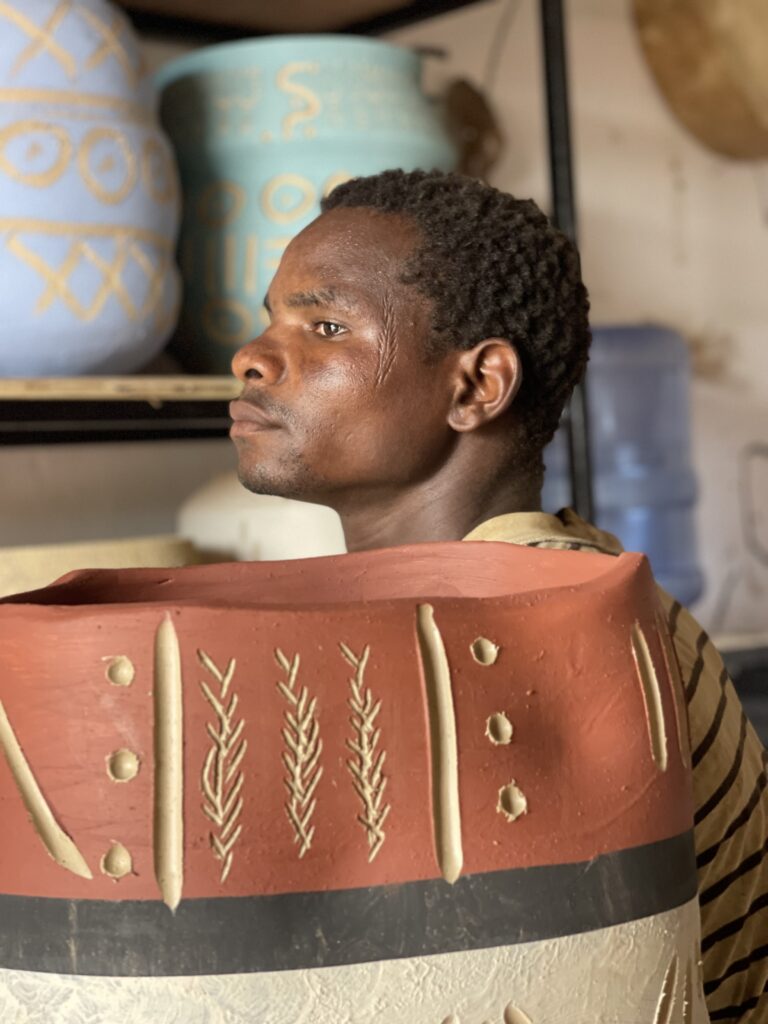
FAB: Ceramics can be a delicate art; it breaks.
Idris Olabode: My journey into pottery began with failure, a pivotal step that I always revisit. In moments of setback, I’ve learned to embrace patience, trusting that, with time, the reasons behind my failures will reveal themselves. Surprisingly, my education in ceramics didn’t unfold within the structured confines of a school; instead, it unfolded through interactions with my professor, explorations in textbooks, and engagement with the pottery community on social media. Leveraging my extensive street experience, I’ve become adept at absorbing knowledge from diverse sources. If a piece I’m working on develops cracks, I delve into the cause, turning each setback into an opportunity to unravel deeper insights about my craft. Learning through hands-on experience, as opposed to just reading books, has proven more enlightening and has allowed me to comprehend the intricacies of ceramics making. My learning journey has been predominantly shaped by my response to failure rather than formal instruction. Without a traditional teacher, I’ve honed my skills through practice, enabling me to seamlessly transition into a role as an instructor. Teaching goes beyond imparting knowledge; it involves studying students’ approaches, making observations, and providing corrective guidance. My journey has been marked by my own mistakes, contributing to the refinement of my craft. Achieving mastery in ceramics demands precision in every step of the process, from clay preparation to waiting for it to dry and culminating in the firing stage. Ceramics, a delicate art form, requires a harmonious convergence of the four universal elements: fire, earth, water, and air. These elements must align for successful ceramic work. The uniqueness of ceramics lies in the intricate interplay of these elements. Unlike other art forms, such as painting, which predominantly involves water and air, ceramics introduces the formidable challenge of the fire element, where cracks often pose the greatest obstacle to perfection. Each stage in the ceramics process unfolds like a symphony, demanding meticulous attention to detail and a profound understanding of the alchemy between the elements.
Ceramics, beyond being a craft, has been a profound teacher in my life, instilling virtues such as patience and resilience. Learning from my own failures, I’ve navigated the emotional rollercoaster of repeated attempts, evolving from tears of frustration to tears of joy when success finally graced my endeavors. The joy derived from persistently trying the same thing for months encapsulates the essence of my journey, emphasising the transformative power of dedication and tenacity. As I dove deeper into the intricacies of ceramics, a philosophy began to emerge. My immersion in this art form reaches a point where it occupies my thoughts 24/7, even infiltrating my dreams. The solitary nature of my work, coupled with the lack of accessible mentors, transformed me into somewhat of a loner in my pursuit. Sharing the challenges of my ceramics career proves challenging, as it requires an understanding of the unique intricacies involved. Despite my inclination towards solitude, I harbour a deep desire to share my experiences. I’ve become attuned to drawing inspiration from dreams, often receiving guidance from unexpected sources. One notable instance was a dream featuring Ladi Kwali, a deceased ceramics artist. In the dream, she imparted wisdom, revealing her name as Hadiza. This ethereal encounter became a catalyst for my belief in the spiritual realm of pottery. Dreams have played a pivotal role in my learning journey, connecting me with renowned potters like Eric London, famously known as “Tortus,” and Adams Field. What initially seemed like a distant fantasy—interacting with these industry giants—slowly became a reality as they started following and engaging with me on social media. My dreams have become a conduit for learning and connecting with the souls of pottery legends, bridging the gap between past and present artisans. My addiction to the craft, coupled with prayer, has fueled my self-directed learning. Tribal marks and other elements in my work serve as a homage to the ancestral souls that guided and inspired my journey. In the vast league of potters’ souls, I find myself connected to a lineage of artisans who have imparted their knowledge across time. As I progress on this path, I anticipate a future where these spiritual connections manifest in tangible collaborations and shared spaces within the pottery community.
Whenever I fail, I try to calm myself down and just give it time because I know that with time, the reason behind my setback will reveal itself.
Idris Olabode
Ceramics Revolution: Colour, Story, and Healing
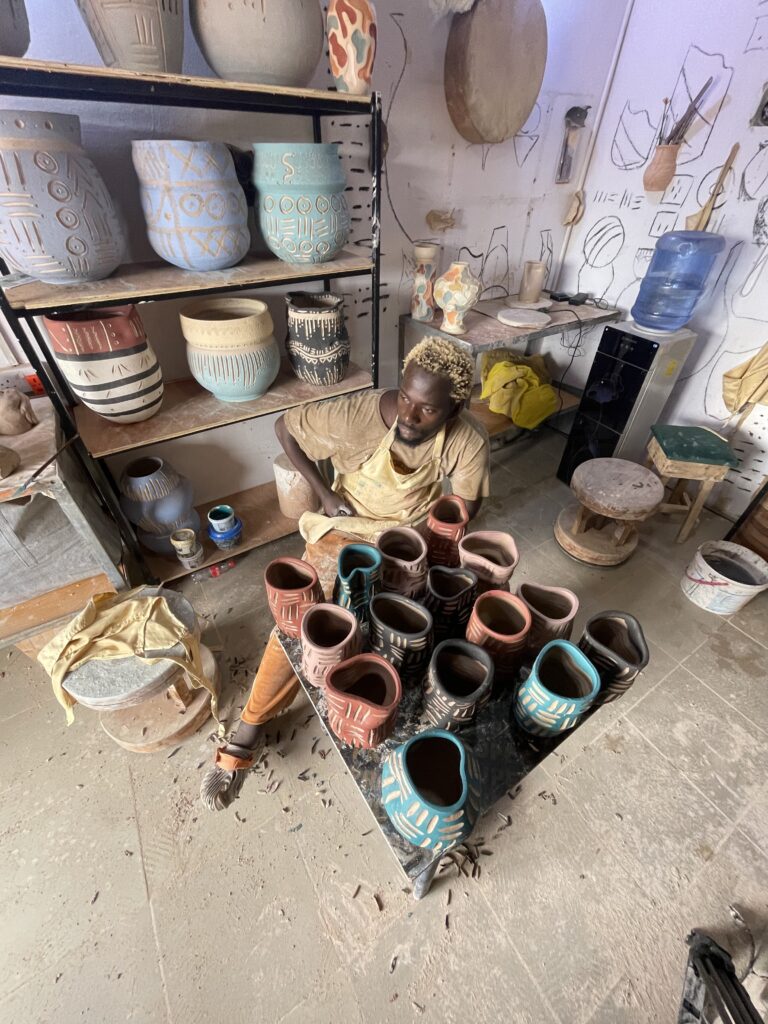
FAB: Have you found a unique name to describe your own style of ceramics?
Idris Olabode: Presently, there are lots of ideas. I feel like I am a student who just graduated from a particular class or phase. My focus lies in expressing gratitude through my creations. The canvas of possibilities extends far, with numerous painting ideas waiting to be transposed onto clay. Despite being rooted in ceramics, my heart remains loyal to the world of painting and the vibrant spectrum of colours.
As a self-professed “man of colour,” I find the intersection of hues to be an endless source of inspiration. At this juncture, I hesitate to affix a definitive label to my art. While I don’t claim the title of spiritual artist, there exists a profound connection with certain individuals that transcends physical presence. My studio serves as a sanctuary where inspiration flows, often without the need for external sources like the internet. In essence, the defining style or name for my creations is still in flux. Currently known as Idris Clay or Clay of Lagos, my primary aspiration remains to bring healing through my artistic endeavors. As I continue to evolve, so too will the identity and essence of my
FAB: How do you navigate the economic market?
Idris Olabode: Art, to the public eye, often appears as a visual delight, but its profound connection lies in the narratives woven around it. Our journey in this world begins with a pristine soul untainted by preconceived notions. It’s the encounters we have and the stories told that mould and sometimes tarnish our perception. Each artistic creation carries unique meanings, and the interpretation often hinges on the stories we hear. Just like individuals react differently to horror movies, some embracing the scare while others shy away, people develop varied perspectives on certain art forms. This dynamic is influenced by the narratives surrounding the art. Some may label ceramic designs and sculptures as fetishistic or eerie. However, in my perspective, I redefine beauty, expunging “ugly” from my dictionary and embracing uniqueness. The challenge lies in altering ingrained perceptions. People tend to associate certain forms with negativity, but I advocate for a shift in focus. Just as one might package poison in a box of chocolates, altering the presentation of art can reshape its reception. The infusion of colours, beyond the typical red terracotta or black forms, offers a refreshing perspective. Is it still considered eerie if it arrives in a kaleidoscope or rainbow hues? Can it be associated with mysticism when it shares a narrative that heals the soul? What if it’s connected to our ancestral roots? These are the questions I aim to explore, challenging preconceived notions about ceramic art and emphasising its potential to transcend perceived limitations.
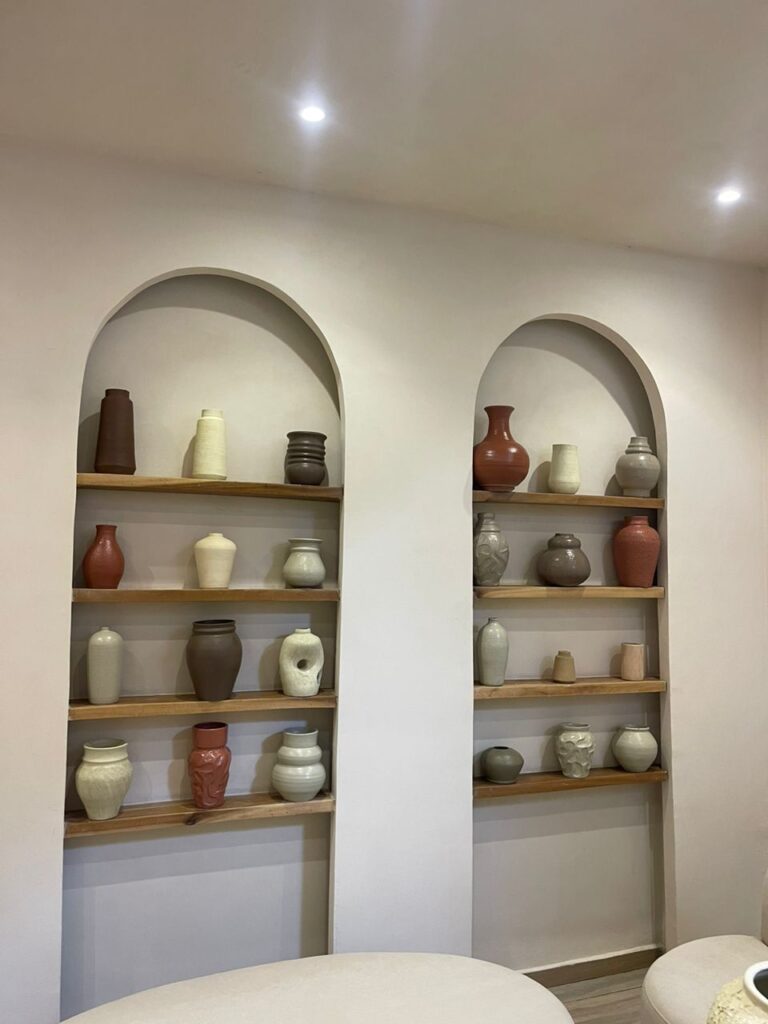
FAB: Have you found any strategy that’s most effective in promoting and selling artwork?
Idris Olabode: The art world, as I perceive it, appears to be monopolised, often necessitating engagement with galleries for the sale of artwork. The exorbitant commissions, such as the 50% profit deduction, imposed by these intermediaries raise ethical concerns in my view. My perspective on the art industry remains rooted in the belief that this system is not conducive to fostering an equitable artist-gallery relationship. As an artist, I find myself at the threshold of a realm recently explored—pottery. Although I haven’t ventured into grand exhibitions that could catapult me into the artistic limelight, I receive numerous invitations from galleries seeking to showcase and collaborate on my work. Despite these opportunities, I am drawn to the rhythm and energy imbibed from the realm of ceramics, embodying the virtue of patience. Currently, I choose to navigate the art landscape at my own pace, refraining from swift engagements with galleries. Instead, I connect personally with those interested in acquiring my creations. My work finds a home on platforms like Etsy, where I set my prices and facilitate direct purchases. This approach not only sustains my business and covers expenses but also serves as fertile ground for refining my skills and nurturing creative ideas. While galleries beckon and the prospect of widespread recognition looms, I stand firm in my decision not to rush into the whirlwind of commercialization. The core essence of my artistic journey lies in my commitment to my craft, allowing the right opportunities to manifest organically in due time. That’s not why I’m here.
FAB: So why are we here?
Idris Olabode: That’s the thing. I am here with a mission, and my mission is to resurrect and breathe life into the dormant aspects of art. I aspire to revolutionise perceptions of pottery, unveiling new dimensions and delivering messages from the dreams that guide me. The core purpose is to redefine the narrative surrounding pottery. In this pursuit, financial support naturally follows when aligned with one’s purpose. The key is to stay focused on the mission rather than being swayed by the allure of chasing money. Pursuing one’s passion attracts a diverse audience, potentially valuing artworks at significant sums, even reaching a million dollars. Patience is crucial, and I believe the time for such recognition is imminent. As for the current economic climate, I reserve extensive commentary for now.
FAB: Is there anyone in the industry, young or old, that you’d love to work with?
Idris Olabode: Collaboration is on my horizon, with remarkable individuals like Onyekachi Irondi, a fellow pottery enthusiast, and Adeoti Azeez, a former classmate. While international collaborations are in my vision, starting with our local talents is paramount. The art world often sees individuals striving for recognition and name prominence. However, I am deliberate in avoiding distractions from my current creative journey. Taking it one step at a time, I believe there’s a long and fruitful path ahead of me. I have a deep-seated conviction that I’ll live a long and fulfilling life, and each stage in my artistic journey is an opportunity to savour the moment before embracing the next phase. Progress is inevitable, and I’m poised to navigate the unfolding chapters of my artistic odyssey.
FAB: You have a unique perspective.
Idris Olabode: Many people say that, but I attribute it to ceramics. Everything I express, even my morals, is rooted in my experience with clay. To truly be a potter, you must be addicted to clay without rushing through life. Certain attributes set potters apart, drawing inspiration from a Chinese philosophy that states that the more you engage in something, the more it becomes a part of you. This craft isn’t just an activity; it reflects in your actions, words, and lifestyle, and patience is a key characteristic. Attempting to rush through projects often leads to failure, and there’s a beauty in submitting to the natural pace of creation. If a pottery piece is meant to take six weeks, attempting to speed up the process risks both quality and additional costs. So, why not embrace the rhythm, let things unfold, and find success organically? I apply this philosophy not just in my craft but in navigating life, ensuring I don’t overwhelm myself and can focus on one thing at a time—even when handling interview offers. Rushing compromises the essence of true craftsmanship.
FAB: You’ve spoken about the lesson from the process of creating this work of art. Is there something you have in stock for people who just want to feel like they can make pottery, create, unwind, and put out all the tension in Lagos?
Idris Olabode: Absolutely. I conduct pottery sessions and offer private lessons. People pay me to guide them in the art of pottery, and I can either teach at their homes or mine. Additionally, I organise pottery sessions, with the next one scheduled for December. Unfortunately, I’ve been unable to host sessions recently due to a leg injury, but I’m on the path to recovery.
FAB: Could you take us through your typical creative process, from the initial idea to the finished piece? What are the key steps and considerations involved in making ceramic?
Idris Olabode: In my unique approach to ceramics, I prefer to work without a preconceived design in mind. When preparing clay and starting a piece, I find solace in silence, allowing the therapy to unfold naturally. I let the shape emerge organically, avoiding the imposition of control. While spiritual music may accompany my work, I seldom engage in conversation. The saying “Clay is in the hands of the potter” resonates with me; the act of creation should flow freely. Each piece I create is a distinct being, shaped by its own destiny. After forming the piece, I contemplate its shape and discern the story it wishes to tell. The clay guides me in choosing the appropriate design, colour, and pattern. It’s a collaborative process where the form dictates, and I respond accordingly. Once the piece dries, I proceed with the firing process. My creative process is not inherently special; it’s a means of conveying messages through clay. When inspired to share a particular message, I create a video, relate it to clay, and present it with captions, allowing viewers to glean lessons from the essence of clay itself.
FAB: What’s the most rewarding aspect of being a pottery artist for you?
Idris Olabode: Quantifying my effort, losses, or what I truly deserve is challenging. However, I believe the best is yet to come. Currently, my most rewarding aspect is having an audience that appreciates my work. The number of followers is an achievement, and the positive responses, compliments, and love I receive motivate me to do more. It’s not just about the money, for I am making very little for now; the genuine support and encouragement drive my passion for creating and sharing my message. Stay up to date on the newest in the world of Fashion, Arts, Beauty and Lifestyle; Follow FAB on socials.
More Like This:
5 Ways To Embrace Your Imperfections
What about the ‘Vintage’ in Wine?
Lagos Leather Fair 2023: A Dazzling Showcase Of African Creativity
